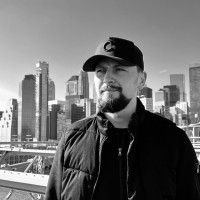The sheer number of influencer platforms on the market is dizzying. It can be downright overwhelming if you’re just jumping into influencer marketing for the first time.
So today, we’re cutting all the extra cra* most blog posts hit you with, helping you focus on finding the best influencer marketing platforms for your brand. Yes, even if it’s not Social Cat!
We’ll discover the factors you must consider when choosing influencer marketing platforms and consult REAL reviews for our summaries of the 5 top influencer marketing platforms.
Let’s start with how to decide which influencer platform is the ✨one✨ for you. Spoiler alert–most platforms aren’t as different from each other as you’d think!
What factors should brands consider when deciding what influencer platforms to use?

You’ll want to pay attention to a few things while deciding which influencer platform to use. Let’s talk about them before we discuss specific influencer platforms.
Pricing and budget
Decide your budget BEFORE you look at influencer platforms. Allot money for both the influencer platform fees and creator fees (aka the money you pay influencers). These are separate, so you’ll need to budget accordingly.
Here are five questions you’ll want to be able to answer:
- What is your budget for the influencer platform? Put another way: How much are you willing to spend per year just to be able to find influencers?
- Does the pricing of the influencer platform you’re looking at fit your budget? (If they don’t list the price on their website, they’re expensive!)
- Would you prefer a monthly or annual contract? You’ll probably want to start with a monthly contract.
- What are the features you NEED?
- Does the platform you’re looking at have a reasonable price for the features they include?
As you do more research, you’ll get a better feel for the industry as a whole. But try to answer these questions as much as possible before you start shopping–it’ll save you some headaches.
Influencer demographics
You want to know if the influencers on the platform appeal to your ideal customer–because if they don’t, you should look elsewhere.
Here are three questions to ask yourself while you’re vetting influencer platforms:
- How many influencers do they have?
- Do influencers opt-in to this platform? Or are they just imported from social media? (Ideally, you want influencers to opt in. We’ll talk about this more in a minute.)
- What are the demographics of the influencers on the platform? What gender are they, how old are they, what do their audiences look like, etc.?
Integrations and flows
This one will depend on your brand, but make sure you know the names of any software you need to integrate with your influencer marketing platforms.
For example, if you use Shopify for distribution, you need a platform that integrates with Shopify to send influencers free products and (potentially) track sales related to your campaigns.
Yes, there are often workarounds for platforms that don’t have the integrations you need, but it’s better not to bring in a third or fourth piece of software if you can help it–that drives up the price and the complexity.
Why are there so many influencer platforms, and are they all different?
First question first: Why are there so many influencer platforms?

The answer is basic economics. Many influencer platforms have formed with the demand for influencers from brands.
The good news? There are basically two kinds of influencer platforms: influencer databases and opt-in platforms.
Influencer databases import influencer profiles onto their platform, creating a huge library you can sort through to find candidates. Once you find some promising influencers, you contact them via email, DM, or both. You’ll probably need to buy extra software to help out.
90% of influencer platforms are influencer databases. They offer the same features, but their marketing is different. Don’t be taken in by the hype; just focus on whether they fit your budget, especially with the added expense of investing in email outreach software.
On the other hand, opt-in platforms try to solve many of the problems created by influencer databases. They have influencers sign up to join, and they vet them before they allow them to create a profile. This removes the need to email influencers separately–you can usually message them directly on the platform! And they’re more likely to respond because they signed up to be there. Plus, you can often also post a campaign (sort of like a job board) and have influencers come to you.
The one downside of an opt-in platform is that it usually only has thousands of influencers available–not millions, like databases. This isn’t a problem in most cases, but it might be if you’re super niched.
Bottom line: If you’re looking at influencer platforms and getting a bad case of FOMO, don’t worry. Most platforms offer the same features in differently-branded packaging.
As you’ve probably already figured out, we’re big fans of opt-in platforms. Let’s explore WHY we suggest starting with one if you’re new to influencer marketing.
Why should brands choose platforms that opt-in influencers?

We also covered this a bit above, so we’ll keep it short. Here’s why opt-in influencer platforms are generally a better choice for brands:
- Vetted influencers. Opt-in platforms generally vet their influencers BEFORE allowing them to work with brands, which filters out most of the low-quality profiles you’ll see online–including those with fake followers!
- End-to-end management. With *most* opt-in platforms, you can set up campaigns, source influencers, communicate, draft and sign contracts, and receive content. Social Cat is a great example of a platform that does all those things! 😉
- Easier campaign management. Let’s face it: influencer marketing campaigns are operationally INTENSE. It saves serious time when influencers can come to you (instead of you ALWAYS having to be the first one to reach out).
There’s nothing *wrong* with influencer database platforms, of course. But IMO, unless you really can’t find influencers who resonate with your target market on any opt-in platforms, databases aren’t worth the extra expense and effort.
And yes, they are generally more expensive–both in their prices and because you often need to pay for outreach software in addition to what you’re already paying for the database. Why mess with it when you can get the same results for less money?
The top 5 influencer platforms according to customer reviews
We’re not just sharing our *opinion* here. (That’d be slimy anyway because we’re biased). Instead, we looked at public reviews for many influencer platforms and compiled the top choices here so you can compare what real customers think. You’re welcome! 😀
Social Cat
Social Cat (nice to meet you!) connects brands with top-rated, affordable influencers.
PROs
- We pride ourselves on the fact that we’re an affordable option for brands of every size.
- If you’re just getting started with influencer marketing, you can try running gifted campaigns using our platform–we’re one of the only influencer platforms that allows you to exchange products for content.
- Our price includes all the licensing you need for running ads, posting, etc.
- Everything you need is here–direct messaging, contract templates, AI-assisted ad copy, and your content library with all the content influencers have created for you.
Brands are most excited about the quality of our influencer talent (a real person on our team vets every influencer), our customer service, and our affordable rates. 🙂 Just check out what some of our customers have to say:
“In my first few weeks I have been matched up with a great variety of people, I'm actually spoilt for choice. The people I have selected so far to work with have been fantastic, great communication. I'm really excited to see how working with these infuencers will help grow my brand.” -Jacqui
“So far, the platform has been doing well for us. I have researched and analyzed other platforms that are very similar, but I always go back to Social Cat…” - Unisoy Jerky
“As a smaller business, paying thousands of dollars for influencer marketing is not possible right now. Social Cat high quality influencers available for reasonable pricing. The process is smooth and since using Social Cat, we have seen an increase in engagement on our social media outlets.” -Amina
CONs
- Honestly, the only reason we can think of that you *might not* like Social Cat is if you’re looking for an influencer database. But for 95% of companies out there, the fact that we’re an opt-in platform will save you significant time and money.
Pricing
Our pricing starts at $99 per month. Licensing is included, but influencer fees are not (this is industry standard).
Upfluence
Upfluence is an influencer database platform that emphasizes helping you connect with your brand’s already-influential customers.
PROs
- There are millions of influencer profiles you can browse. They import the profiles, but still–that’s a pretty good number!
- They’ve done their best to integrate every step of the campaign process that they can. So you can find influencers, track ROI, make payments, and more. They also have some AI-powered features.
- You can find influencers on Instagram, TikTok, YouTube, and more.
- If you’re new to influencer marketing, they have lots of training and support available for you to make the most of your campaigns.
CONs
- It’s complex, so you may have a bit of a learning curve.
- It’s expensive compared to other platforms, and they *might* require you to sign an annual contract–it’s unclear from their website.
Pricing
Upfluence’s pricing is custom, so you must contact them, and they’ll create a package for you based on your brand’s needs. (Read: $$$$)
Creator.co
Creator.co is another database-style influencer platform that connects brands with creators who want to do affiliate marketing.
PROs
- They have super-flexible pricing options: you can choose between self-service or managed pricing plans.
- You can access over 200 million influencer profiles in their database.
- If you go with the managed service plan, you can get a dedicated account manager for your brand.
CONs
- With flexibility comes variability–the costs of using Creator.co can escalate if you opt for any of their add-ons or managed services.
- Some users also reported having trouble navigating the platform.
Pricing
Creator.Co starts at $395 per month.
Afluencer
Afluencer is an opt-in influencer platform that has a free plan.
PROs
- Reviewers report that it’s easy to navigate and use because it’s simple.
- They offer free and affordable plans, which make them accessible for small businesses.
- Their support is good–for both brands and influencers!
CONs
- They don’t have the most advanced features of other, more expensive platforms.
- Their influencer pool is also relatively small.
Pricing
- We said this already (sorry), but they have a free plan! And their premium plans start at $49/month.
Insense
Insense is an opt-in platform that focuses on UGC and whitelisting.
PROs
- As mentioned above, they have many pricing plans and options–they even offer to manage your campaigns like an influencer agency if you’re willing to pay extra!
- They also vet their creators, a hallmark of opt-in influencer platforms.
- You’ll find options for content, format, and more.
CONs
- Licensing (the thing you need to be able to use creative for your brand) isn’t included in their pricing.
- The start-up cost is steep, even for their basic plan.
Pricing
Insense starts at $500 per month.
Which one will you choose?
Now that we’ve covered what to look for in influencer platforms and what real users have to say about the top ones, you can make your own choice!

As we mentioned earlier in this article, you must balance what you’re paying for and the features you get. Consider your experience level: If you’re a beginner, you’ll want to learn about influencer marketing at an affordable price. So, you’re probably looking for a monthly contract, and only a handful of collaborations at first to get your feet wet and see how it goes.
Besides budget, you’ll also want to consider the amount of TIME you have to invest. Some platforms have steeper learning curves than others, and managing influencers takes time, too.
Finally, if you’re just looking for UGC, influencer platforms may not be the right fit. You certainly CAN get UGC on influencer platforms (we offer it ourselves!), but options like Billo or Clip might be better for you.
That’s a lot to consider! But now you have the information you need to make the best choice for your brand!
If you have any questions about influencer platforms, drop them in the comments!
Table of content
Looking for influencers?










